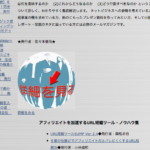Portland-area fans of the AMC cult-favorite drama Mad Men take heart. Due to the Mad Men Casting Call contest (a partnership between AMC and Banana Republic), you can get a shot at a guest appearance on the show. All it takes is some creativity, a camera and a devotion to 1960s-era coolness bordering on the fanatical.
The rules are simple: visit a Banana Republic to get a ‘Mad About Style Guide’, register, and then submit a photo showing a scene and characters that could fit right into the set of the TV show. The photo with the highest number of votes when the contest ends on September 6 gets a walk-on appearance and a small shot at being a star.
Dan Routh is creative director of Burgess Advertising & Marketing, one of Maine’s largest ad firms. He’s also a huge fan of the show, which depicts the life and times of Manhattan ad men in the 1960s. Having cut his teeth as a New York City advertising art director, Routh knows the subject well. He also happens to have a trove of period items–from desks to lamps to clunky black telephones–ready to serve as props. Add to this the desire to take advantage of an opportunity to do a little social media marketing, and this contest was a no-brainer for Routh.
The only thing he had to buy was an $8 pack of Lucky Strikes cigarettes.
Check out Routh’s Mad Men photo and add your vote.
Below, see some of the shoot outtakes, including some wide scenes that include his entire office and the lights we used on the impromptu shoot. Yes, that’s real cigarette smoke.













